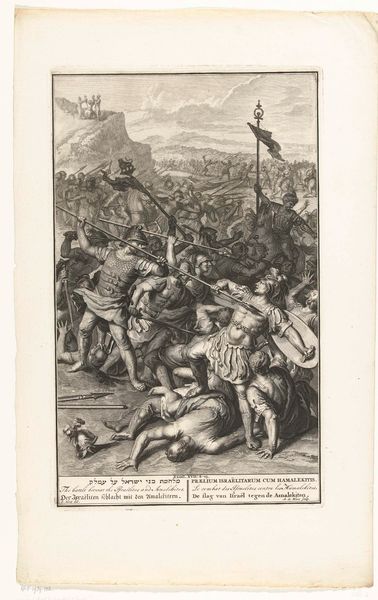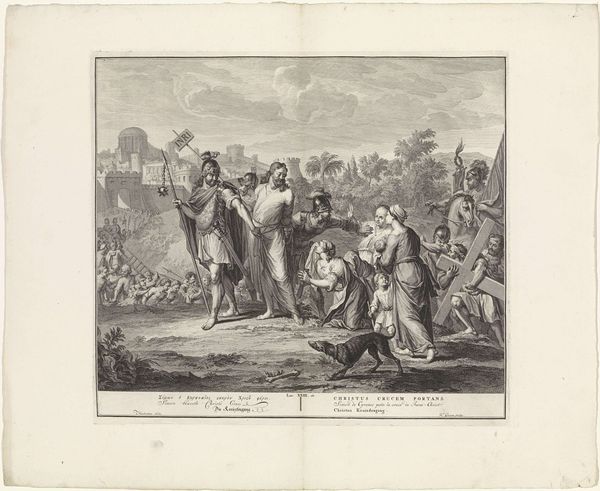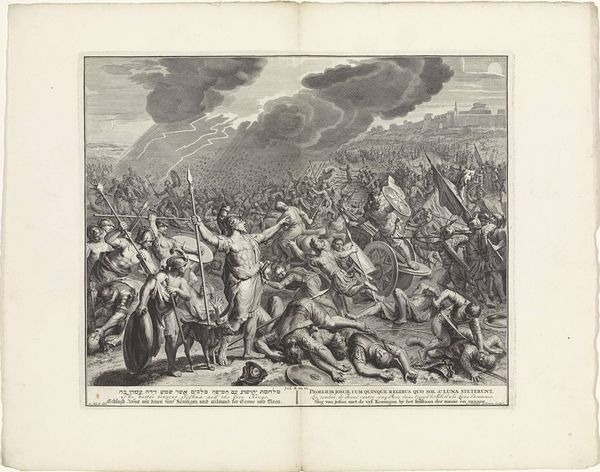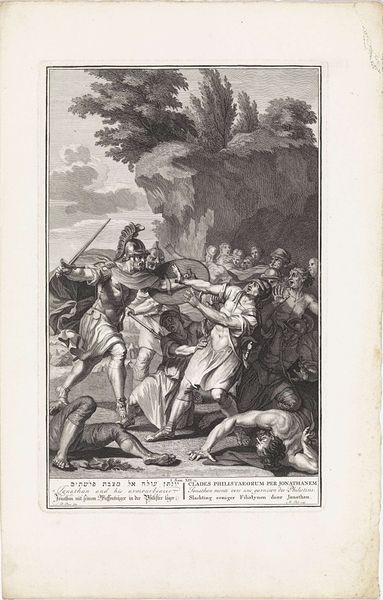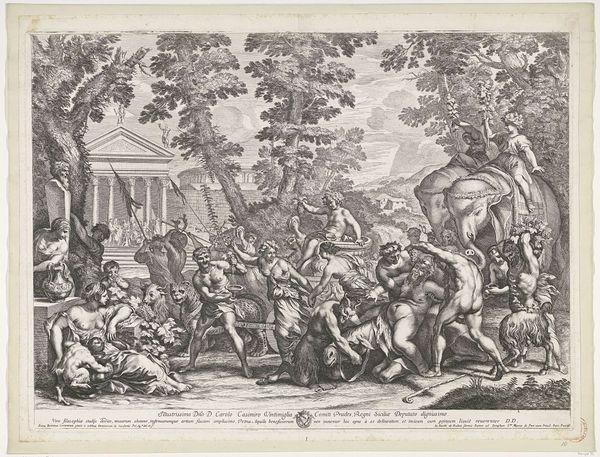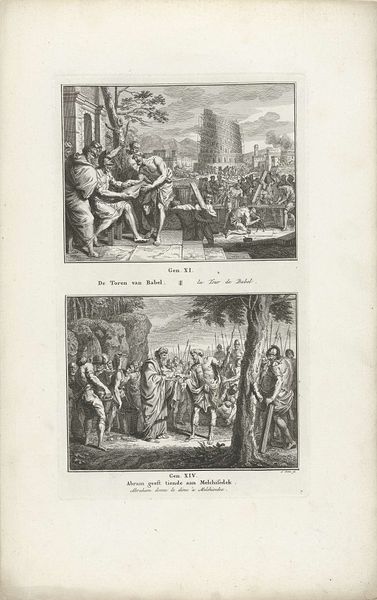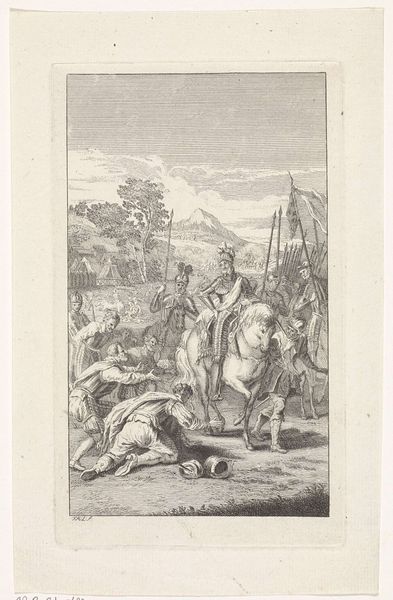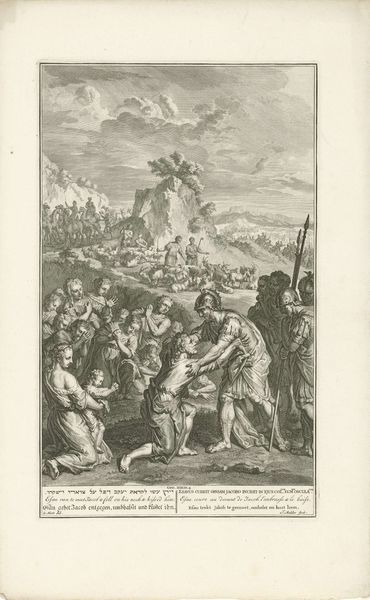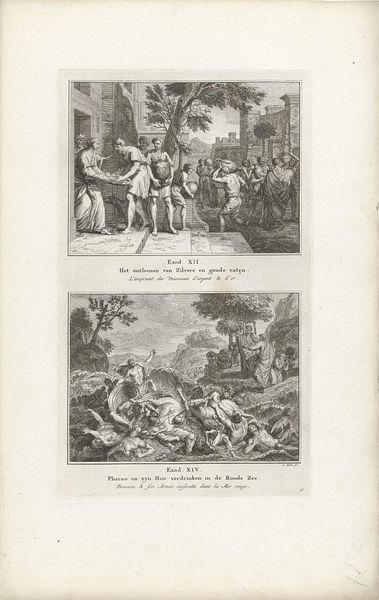
David haalt zijn twee vrouwen en de buit terug bij de Amalekieten 1720 - 1728
0:00
0:00
print, engraving
#
narrative-art
#
baroque
# print
#
figuration
#
line
#
history-painting
#
engraving
Dimensions: height 350 mm, width 219 mm
Copyright: Rijks Museum: Open Domain
Abraham de Blois etched this print, "David recovers his two wives and the spoil from the Amalekites," around the turn of the 18th century. Note the victor’s banquet in the foreground: David and his men carouse, celebrating their triumph, while in the background, the spoils of war—livestock and people—are recovered. Observe the repetition of the triumphant return in classical art, such as Roman victory columns, where the spoils of war and the defeated are paraded for all to see. This motif echoes through time, reappearing in triumphal arches and Renaissance paintings. The act of feasting, laden with symbolic weight, is a motif as old as Gilgamesh. Consider how this echoes through time, from ancient symposiums to the Last Supper. Such images tap into primal emotions: the thrill of victory, the satisfaction of revenge, and the assertion of power. These themes, embedded in our collective memory, continue to resonate across centuries, revealing the cyclical nature of human experience.
Comments
No comments
Be the first to comment and join the conversation on the ultimate creative platform.
